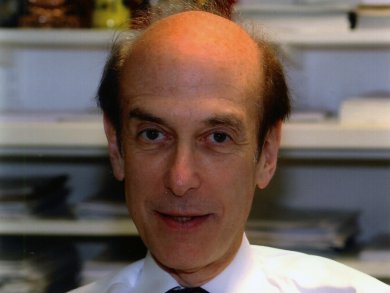Professor Stephen J. Lippard, Massachusetts Institute of Technology (MIT), Cambridge, USA, has been awarded the Priestley Medal, which is the highest honor of the American Chemical Society (ACS). The Priestley Medal is awarded annually and is given in recognition of distinguished service and in commemoration of lifetime achievements in chemistry. It was presented at the 247th ACS National Meeting & Exposition, Dallas, USA, at a special banquet where Stephen J. Lippard also gave the Priestley Medal Address.
Lippard is honored for “mentoring legions of scientists in the course of furthering the basic science of inorganic chemistry and paving the way for improvements in human health.”
Stephen J. Lippard, born 1940 in Pittsburgh, USA, studied at Haverford College, Pennsylvania, USA, and completed his Ph.D. at MIT in 1965 under the guidance of Professor F. Albert Cotton. After postdoctoral work at MIT, he started his independent career at Columbia University in 1966. He returned to MIT in 1983 and is currently Arthur Amos Noyes Professor of Chemistry.
Lippard´s research emcompasses the fields of biological and inorganic chemistry and is focused on biological interactions involving metal ions, including platinum anticancer drugs, diiron complexes, bacterial multicomponent monooxygenases, and inorganic neurotransmitters and signal transducers.
Selected publications:
- Triptycene-based Bis(benzimidazole) Carboxylate-Bridged Biomimetic Diiron(II) Complexes,
Yang Li, Chan Myae Myae Soe, Justin J. Wilson, Suan Lian Tuang, Ulf-Peter Apfel, Stephen J. Lippard,
Eur. J. Inorg. Chem. 2013, 2011–2019.
DOI: 10.1002/ejic.201201387 - Aging-Associated Enzyme Human Clock-1: Substrate-Gated Reduction of the Diiron Center for 5-Demethoyubiquinone Hydroxylation,
Tsai-Te Lu, Seung Jae Lee, Ulf-Peter Apfel, Stephen J. Lippard,
Biochemistry 2013, 52, 2236–2244.
DOI: 10.1021/bi301674p - Control of Substrate Access to the Active Site in Methane Monooxygenase,
Seung Jae Lee, Michael S. McCormick, Stephen J. Lippard, Uhn-Soo Cho,
Nature 2013, 494, 380–384.
DOI:10.1038/nature11880




